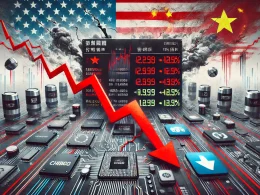Zomato to Join BSE Sensex, Replacing JSW Steel: A New Era for India’s Equity Markets
In a significant reshuffle of the BSE Sensex, Zomato, the pioneering food delivery and restaurant aggregator, is set to replace JSW Steel. This marks a watershed moment for India’s equity markets, symbolizing the ascendance of technology-driven, consumer-focused businesses over traditional industrial sectors. Zomato’s inclusion reflects the evolving structure of the Indian economy, driven by digital innovation, urbanization, and changing consumer habits.
This article explores the journey of Zomato, the reasons for its inclusion in the Sensex, the implications for the broader market, and what this move signifies for investors, stakeholders, and the Indian economy.
Zomato’s Meteoric Rise: From Startup to Market Leader
1. Humble Beginnings in 2008
Zomato was founded in 2008 by Deepinder Goyal and Pankaj Chaddah as a restaurant discovery platform, initially called “Foodiebay.” Its early focus on digitizing menus and providing restaurant reviews struck a chord with urban Indian consumers, setting the stage for exponential growth.
2. Transition to Food Delivery
In 2015, Zomato ventured into food delivery, competing with players like Swiggy and Uber Eats. Its success was driven by its user-friendly app, efficient delivery network, and ability to onboard a vast array of restaurants. This pivot transformed Zomato into a household name, establishing it as one of India’s largest food-tech platforms.
3. IPO and Public Market Success
Zomato made history in July 2021 by becoming the first Indian food-tech unicorn to go public. Its blockbuster IPO, which raised ₹9,375 crores ($1.3 billion), underscored investor confidence in India’s digital economy. Despite initial volatility, Zomato has since stabilized, achieving consistent revenue growth and reducing operational losses, making it a contender for blue-chip status.

Why Zomato? Factors Behind Its Inclusion in the Sensex
The inclusion of a company in the BSE Sensex is based on strict criteria, including market capitalization, liquidity, sector representation, and trading volumes. Zomato’s entry highlights its growing prominence in India’s economic landscape.
1. Robust Market Capitalization
Zomato’s market capitalization has surged in recent years, driven by investor confidence in its long-term growth potential. Its inclusion reflects its status as a large-cap stock, on par with established blue-chip companies.
2. High Trading Volumes
Zomato has consistently been among the most actively traded stocks on the NSE and BSE. Its high liquidity ensures ease of entry and exit for institutional and retail investors, meeting another key criterion for Sensex inclusion.
3. Sectoral Shift Towards Technology
Zomato’s inclusion represents a broader trend of technology-driven companies gaining prominence in Indian markets. With increasing digitization and consumer preference for online platforms, companies like Zomato are becoming more reflective of the economy’s direction than traditional industrial players like JSW Steel.
4. Performance Metrics and Growth Potential
Despite initial challenges in achieving profitability, Zomato has demonstrated significant improvements in its financial performance. Its focus on cost efficiency, diversified revenue streams (e.g., Hyperpure and Zomato Gold), and expansion into tier-2 and tier-3 cities have positioned it as a long-term growth story.

Replacing JSW Steel: A Symbolic Transition
1. JSW Steel’s Legacy in the Sensex
JSW Steel, one of India’s largest steel producers, has been a cornerstone of the BSE Sensex, representing the industrial and manufacturing strength of the Indian economy. Its exclusion is not a reflection of poor performance but rather a recalibration of the index to align with evolving economic trends.
2. The Decline of Traditional Industries in Market Representation
The replacement of JSW Steel with Zomato symbolizes a shift from traditional industries like steel and manufacturing to technology and consumer-driven sectors. This transition mirrors global trends, where indices increasingly feature tech giants and e-commerce leaders over industrial heavyweights.
3. Implications for JSW Steel
While being dropped from the Sensex may impact JSW Steel’s visibility among passive investors and funds tracking the index, it remains a fundamentally strong company with a significant role in India’s industrial growth story.
Implications of Zomato’s Entry
1. For the BSE Sensex
Zomato’s inclusion diversifies the Sensex by increasing representation from the technology and consumer services sectors. This enhances the index’s relevance as a benchmark for the modern Indian economy, making it more attractive to global investors.
2. For Investors
Zomato’s inclusion is likely to attract increased attention from institutional investors, particularly passive funds that track the Sensex. This could boost its stock price and liquidity further, benefiting current shareholders.
3. For the Indian Economy
The move highlights the growing importance of digital platforms in India’s economic fabric. It reinforces India’s position as a hub for technology and innovation, showcasing the country’s ability to produce globally competitive tech-driven businesses.
4. For the Technology Sector
Zomato’s elevation to the Sensex is a win for the Indian startup ecosystem. It validates the potential for tech-driven businesses to achieve blue-chip status, encouraging more innovation and investment in the sector.

Opportunities and Challenges Ahead for Zomato
1. Opportunities
a. Expanding Market Penetration:
Zomato has significant growth potential in India’s tier-2 and tier-3 cities, where digital adoption is accelerating.
b. Diversifying Revenue Streams:
Initiatives like Hyperpure (B2B supplies for restaurants) and Zomato Gold (premium memberships) could provide additional revenue streams and improve profitability.
c. International Expansion:
Zomato could explore opportunities in international markets, leveraging its expertise in scaling food delivery platforms.
2. Challenges
a. Achieving Profitability:
Despite improving financial metrics, Zomato still faces pressure to achieve consistent profitability while maintaining growth.
b. Intense Competition:
The food-tech space in India remains highly competitive, with players like Swiggy and new entrants posing challenges.
c. Regulatory Risks:
As a tech-driven platform, Zomato is subject to evolving regulations around data privacy, labor practices, and platform accountability.

The Broader Shift in India’s Equity Markets
1. Rise of New-Age Companies
Zomato’s inclusion in the Sensex reflects a broader trend of new-age, tech-driven companies gaining prominence in Indian equity markets. Other startups like Nykaa, Paytm, and Policybazaar are also vying for space in benchmark indices, signaling the emergence of a digital-first economy.
2. Changing Investor Preferences
Institutional and retail investors are increasingly favoring companies that align with future growth sectors like technology, e-commerce, and renewable energy. This shift is influencing the composition of benchmark indices like the Sensex and Nifty.
3. Global Comparisons
The shift in India’s market mirrors global trends, where indices like the S&P 500 and Nasdaq are dominated by tech giants like Apple, Microsoft, and Amazon. Zomato’s inclusion underscores India’s alignment with these global developments.
Conclusion
The inclusion of Zomato in the BSE Sensex is a defining moment for India’s equity markets, reflecting the country’s transition from a traditional, industrial economy to a digital-first, consumer-driven one. While this shift brings opportunities for growth and innovation, it also underscores the need for companies like Zomato to demonstrate long-term profitability and resilience.
For investors, Zomato’s entry into the Sensex represents an opportunity to participate in the growth of India’s digital economy. For the broader market, it signals the growing importance of technology and consumer services in shaping India’s economic future. As Zomato joins the ranks of India’s most influential companies, its journey will serve as a bellwether for the evolving dynamics of Indian business and finance.









